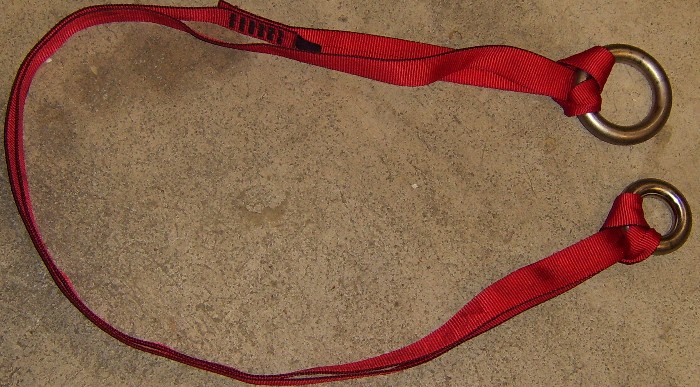Is there any reason that this is a bad idea for a friction saver?

I took the rings off of my old friction saver because I damaged the cord - so I know they are good enough. The nylon loop runner is a standard one from Sherrill and rated for 4000# so I know that is fine. Especially since I used rings I already had, this would give me a second friction saver for an $8 nylon loop.
I thought I might put a stitch to hold the loop together - though I am a little hesitant to do that because I don't know if that will weaken the loop runner. I doubt it would, but nor do I have the ability to test it.
Am I out of ANSI Z133 standards if I do this?
Thanks!

I took the rings off of my old friction saver because I damaged the cord - so I know they are good enough. The nylon loop runner is a standard one from Sherrill and rated for 4000# so I know that is fine. Especially since I used rings I already had, this would give me a second friction saver for an $8 nylon loop.
I thought I might put a stitch to hold the loop together - though I am a little hesitant to do that because I don't know if that will weaken the loop runner. I doubt it would, but nor do I have the ability to test it.
Am I out of ANSI Z133 standards if I do this?
Thanks!

























































